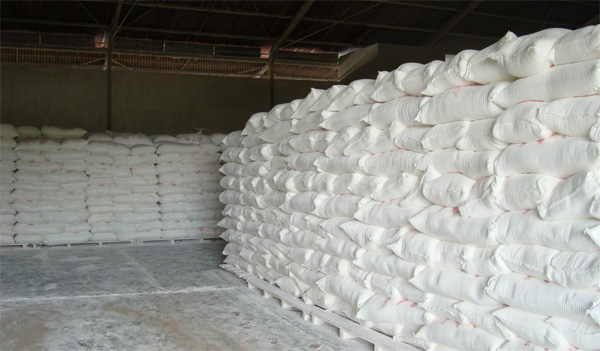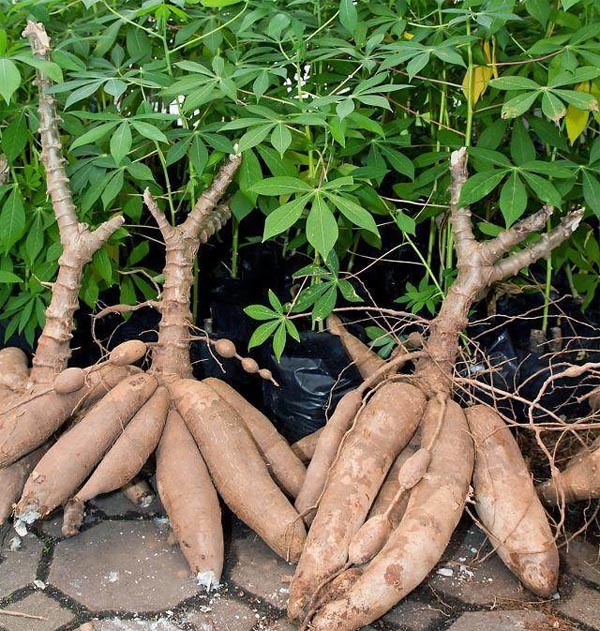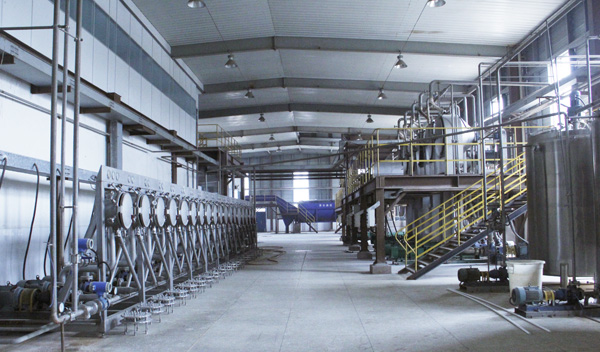Analysis of tapioca starch products in ASEAN countries and China cassava market
Cassava, potato and sweet potato are among the world's three major potato crops. They are one of the seven crops with an annual output of more than 100 million tons. They are important economic crops in the tropical and subtropical regions. About 100 countries and regions grow cassava, Asia, Africa, Latin America and the Caribbean are the main producing areas for cassava, with Africa being the largest in Africa and Asia in the second. In Asia, cassava is only used as grain in mountainous areas. Most of it is exported as raw material for starch production. In the international market, cassava import and export products mainly include cassava, tapioca and tapioca starch. The deep-processed products mainly include modified starch and chemical products (ethanol, alcohol, etc.) and starch syrup. This article only analyzes the development of tapioca starch in the ASEAN countries and the China cassava market.
 Tapioca starch
Tapioca starch
I. Competitive analysis of cassava planting and tapioca starch products in ASEAN countries
(1) According to FAO statistics, in 2008, the global cassava harvested area was 18.69 million hectares, Southeast Asia was 3.4 million hectares, accounting for 18.21% of the world; global cassava output reached 232.95 million tons, and Thailand was 27.56 million tons, accounting for the world's total output. 11.83%, ranking second in the world, Indonesia is about 20 million tons, ranking fourth in the world, Vietnam is more than 8 million tons, ranking seventh in the world. Cambodia's cassava production has reached 2 million tons in 2007. The output of cassava in ASEAN countries accounts for 20.42% of the world total.
(2) Analysis of competitiveness of tapioca starch products in ASEAN countries
According to FAO statistics, the export volume of cassava starch in the world is increasing year by year. In 2003, it exceeded 1 million tons for the first time. In 2004, it was 1,376,400 tons, which was more than 2.6 times of the export volume in 1995, accounting for 17.37 of the export volume of cassava and processed products in that year. %, the export value is 269 million US dollars, accounting for 32.02% of the total export value. Exports of several major tapioca starch exporters in Asia, such as Thailand, Indonesia, China, Cambodia, and Singapore, account for a high share of world exports, exceeding 95% of the world's total exports each year, up to 98%, 2004 The export volume of tapioca starch in these countries reached 1,345,100 tons, accounting for 97.73% of the world's total exports. Thailand is the world's largest exporter of tapioca starch, which dominates the world's export market for tapioca starch. In 2003, exports exceeded 1 million tons for the first time, accounting for 88% of the world. Thailand's tapioca starch exports account for 79% of the world's total.
 Cassava
Cassava
Due to the certain gap in quality, the tapioca starch produced in China has no way to compete with the tapioca starch in Thailand. In addition, since October 1, 2003, China and Thailand have realized the advancement of China and Thailand in the framework of the China-ASEAN Free Trade Area. The zero tariff on fruit and vegetable products, the demand for Thai tapioca starch products in the Chinese market is increasing year by year. Most of the Thai tapioca starch products are exported to the Chinese market, but neither of them can completely monopolize the other market, that is, the Chinese market is not Thai tapioca starch. The only market for export, Thai tapioca starch is not completely exported to China.
With the development of cassava cultivation in Vietnam, Vietnamese tapioca starch products exported to the Chinese market are also increasing year by year. Especially after January 1, 2006, Vietnam’s export of tapioca starch products to China has begun to enjoy zero tariffs. The cost is lower than that of Thailand. The price of tapioca starch products is also cheaper than that of Thailand. However, the quality of Vietnamese tapioca starch is not as high as that of Thailand. Therefore, Vietnamese tapioca starch products cannot shake the status of Thai tapioca starch products in China.
Indonesia's cassava products are exported less, and the share of tapioca starch products exported to the Chinese market is also small. As the fourth largest producer of cassava in Asia, Cambodia has become increasingly close to China. The trade in tapioca starch products between the two countries is not the trade content of the main cassava products of the two countries. More and more Chinese companies are heading to Cambodia. Investing in the development of cassava planting industry, in this form to expand the production of cassava that can be controlled by China, as time goes by, it can be concluded that the trade of cassava starch products between China and Cambodia will gradually show an expanding trend.
 Tapioca starch processing machine
Tapioca starch processing machine
Ⅱ, the analysis of the supply of tapioca starch products in China market
Since the late 1990s, China has gradually transformed from a traditional cassava exporter to a major cassava importer. As the world's oil, coal, natural gas and other primary energy resources are increasingly scarce, countries around the world, including China, are vigorously developing alternatives to renewable petrochemical energy. Cassava is considered to be the best non-food crop for bioethanol production. These cassava requirements make the cassava used to produce tapioca starch more compact. In addition, tapioca starch can be widely used in food, medicine, paper, textile, oil drilling, building materials and feed, as a basic raw material. The new technology and new materials of tapioca starch as raw materials continue to emerge, and the demand for tapioca starch will continue to increase. According to experts' prediction, in the future, more than 60% of China's tapioca starch demand will be offset by imports.
(1) Domestic supply of tapioca starch in China market
In the 1920s, cassava was introduced to the southern part of China, mainly in Guangdong, Guangxi and Hainan. Now it has gradually expanded to Yunnan, Fujian, Guizhou and other provinces. At present, the harvested area of cassava in China is 268,900 hectares, which is 16.55% higher than the 237,700 hectares in 1992. However, the proportion of the world's total harvested area has not increased, and it has remained at around 1.4%. In 1992, the total output of cassava was only 3.36 million tons, reaching 4.37 million tons in 2007, which was a decrease of only 1.92%. In terms of the total amount, China's cassava planting industry has indeed made progress, but its status in the world is very low. Compared with ASEAN countries, the prevalence of Chinese cassava cultivation varies greatly. With the increase of planting technology, the output of Chinese cassava continued to increase. In 1990, the yield of cassava was 13.91 tons/ha, and in 2007 it reached 16.25 tons/ha, which was 16.82% higher than that in 1990. At the same time, China's cassava yield is much higher. At the world average. However, the total output is not high, and the production of tapioca starch is far from the amount of tapioca starch actually needed in China.
(2) International supply of tapioca starch in the China market
The world's imports of tapioca starch have maintained a growth momentum since 2000. In 2004, the world's total imports of tapioca starch was 1,825,800 tons, nearly 2.5 times that of 1995. China is the world's largest importer of tapioca starch. In recent years, China's demand for cassava products has become increasingly strong. Since 1998, China's imports of tapioca starch have maintained a growth momentum, starting from 2002 and growing at an annual rate. More than 20%, the import volume in 2004 was 1,169,500 tons, 4.5 times that of 10 years ago, accounting for 64.05% of the world. The reason why China relies too much on the supply of tapioca starch in ASEAN countries, in addition to the special physical and geographical conditions of ASEAN countries, but also because of the small scale of domestic tapioca starch production in China, the production of tapioca starch in other cassava planting areas must go to African countries. There are fewer high quality cassava processing plants.
PREV:Cassava production and industry development in Sierra Leone
NEXT:DOING invites you to Lagos International Trade Fair in Nigeria
Leave a message
- WhatsApp:
+8613526615783
- Email:
sales@doinggroup.com
- Tel:
0086 135 2661 5783
- Phone:
0086 371 5677 1822
- Skype:
elina881130
- Address:
No.133 Yaozhai Road, Jinshui District, Zhengzhou City, Henan Province, China
-
 Cassava chips processing machine shipped to Nigeria
Cassava chips processing machine shipped to Nigeria
-
 Factors affecting the price of cassava processing equipment
Factors affecting the price of cassava processing equipment
-
 How to starct cassava production and processing business in Nigeria ?
How to starct cassava production and processing business in Nigeria ?
-
 DOING cassava starch production line successfully delivered to Nigeria
DOING cassava starch production line successfully delivered to Nigeria
-
 Cassava peeling machine shipped to Nigeria
Cassava peeling machine shipped to Nigeria
-
 What are the advantages of automatic starch production line ?
What are the advantages of automatic starch production line ?
-
 Garri processing machines and their prices
Garri processing machines and their prices
-
 New cassava slicer machine are ready to ship to Nigeria
New cassava slicer machine are ready to ship to Nigeria
-
 How profitable is garri processing business in nigeria ?
How profitable is garri processing business in nigeria ?
-
 Factors affecting the price of garri processing machine
Factors affecting the price of garri processing machine
-
 What is high quality cassava flour, how to produce high quality cassava flour ?
What is high quality cassava flour, how to produce high quality cassava flour ?
-
 How to process cassava into cassava chips ?
How to process cassava into cassava chips ?
-
 Cassava starch manufacturing process
Cassava starch manufacturing process
-
 How to maintain cassava starch processing equipment ?
How to maintain cassava starch processing equipment ?
-
 How to extract cassava starch ?
How to extract cassava starch ?
-
 How to make cassasva starch?
How to make cassasva starch?
-
 Water, electricity, steam and land deploy in starch processing plant
Water, electricity, steam and land deploy in starch processing plant
-
 How profitable is cassava starch made?
How profitable is cassava starch made?
Leave a message

Tel/Whatsapp:
+8613526615783



